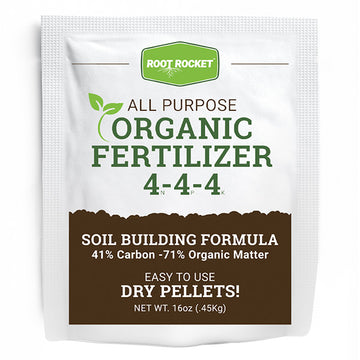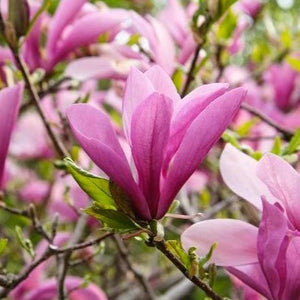The Jane Magnolia is a beautiful tree and a gorgeous addition to many landscapes. Learn Jane Magnolia tree facts below.
Why Choose to Plant the Jane Magnolia?
The Jane Magnolia is an incredibly hardy, fast-growing, petite-sized magnolia tree variety that features vibrant flower buds. The buds bloom on bare branches for about a month in mid to late spring, before the onset of its summer foliage. These huge, fragrant pink and purple tulip-shaped blossoms brighten any yard or garden. They are easily grown and are small enough that they can be planted just about anywhere. If you love magnolias, but prefer colored blooms to the traditional white, the Jane Magnolia is what you want.
- The Jane Magnolia is hardy to minus 30 degrees and ideal for growing zones 4 to 8.
- They can be grown in full sun or partial shade.
- They are easy to grow in large yards or small, compact gardens.
- Jane Magnolias are suitable for growth in nearly all soil types. They are highly adaptable and thrive in acidic, well-drained conditions.
- At maturity, the Jane Magnolia will be 10 to 15 feet tall and 6 to 10 feet wide.
- This variety features reddish purple and pink blooms in early to mid-spring and gorgeous yellow and copper leaves in the fall.
Garden & Hedge Landscaping with the Jane Magnolia
The Jane Magnolia is a non-invasive, low-branching, shrub-like tree that makes an ideal focal point for any yard. Unlike the larger magnolia tree varieties, the smaller Jane Magnolia can be planted near your home, deck, or fence line. It makes a stunning, maintenance-free hedge. This adaptable little tree doesn’t require pruning, but it does tolerate it extremely well, as long as you don’t do so too late into the season.
Pro Tip: If you want to make your home or garden a focal point, consider planting in groups of 3 or 4 to anchor the corners of your garden or your home.
Jane Magnolia Care Tips
Like most tree varieties, the Jane Magnolia is best planted in the spring or fall, and not in the heat of the summer. This tree can be planted in full sun, or in partial shade, under larger deciduous trees. Where you grow them is pretty much only limited by your imagination. For the best growth results, we recommend the following:
- Deeply water your newly planted Jane Magnolia two to three times per week for the first summer season. This will help it get more well-established.
- Using 2 to 3 inches of mulch will help keep your soil cool and moist and the weeds at bay. The Jane Magnolia will thrive under those conditions.
- Using a slow release fertilizer in early spring will not only help your tree grow faster and more vigorously, but it may also get you a second bloom in midsummer.
- Pruning the Jane Magnolia is not required. However, if you are going to shape it, it’s best done right after all of the blooms are gone for the season. If you prune too late, you run the risk of cutting off the flower buds that will form the following year's blooms. For trees that bloom a second time in the summer, you want to wait until early fall to prune them.
Common Jane Magnolia Problems: Pests and Diseases
The Jane Magnolia is generally a very pest and disease-free magnolia variety. However, if you do find that leaf spot, canker, anthracnose or powdery mildew becomes a problem, you can use copper fungicides to get it under control. Insect problems such as scale, weevils, and thrips are also occasionally an issue, and can be treated by spraying horticultural oil over the entirety of the tree.
What Is the Difference Between a Jane Magnolia vs. Ann Magnolia?
The Jane Magnolia is slightly larger than the Ann Magnolia and the flowers have more petals. Additionally, the flowers on the Jane Magnolia are lighter.
We highly recommend the Jane Magnolia to anyone who wants to beautify their landscape. This gorgeous tree is not only one of the most pleasing to the eye of all of the magnolia varieties, but it’s one of the easiest to grow and maintain.
Now that you’ve learned Jane Magnolia tree facts browse our online plant nursery for the biggest selection of plants and trees available.
You May Also Like:


